Last modified: December 3, 2025
Managing dependent accounts
Providers
What are dependent accounts?
Dependent accounts let you create and manage patient profiles for children and dependents under 18 with oversight from a parent or guardian. These accounts are linked to a parent or guardian’s email, allowing them to view and manage plans and place orders on behalf of their dependent.
This feature is designed for practices that offer family or pediatric care and ensures dependents receive safe, practitioner-guided support. All dependent accounts must be created by a provider and are fully managed by the parent or guardian once activated.
With dependent accounts:
- Parents can have their own patient profile or just manage a dependent account.
- Each dependent is assigned one parent, who can place orders, set up auto-refills, and manage plans.
- Minors won’t have direct access to their account. When they turn 18, a secure transition lets them create their own login and take control of their care.
This functionality helps extend whole-person care to younger patients, while maintaining clear roles and safeguards for providers and families.
Setting up a dependent account
Setting up a dependent account is incredibly easy, and can be done in a couple of different ways.
To set up a dependent account:
- Click Patients in the navigation bar on the left-hand side of your account.
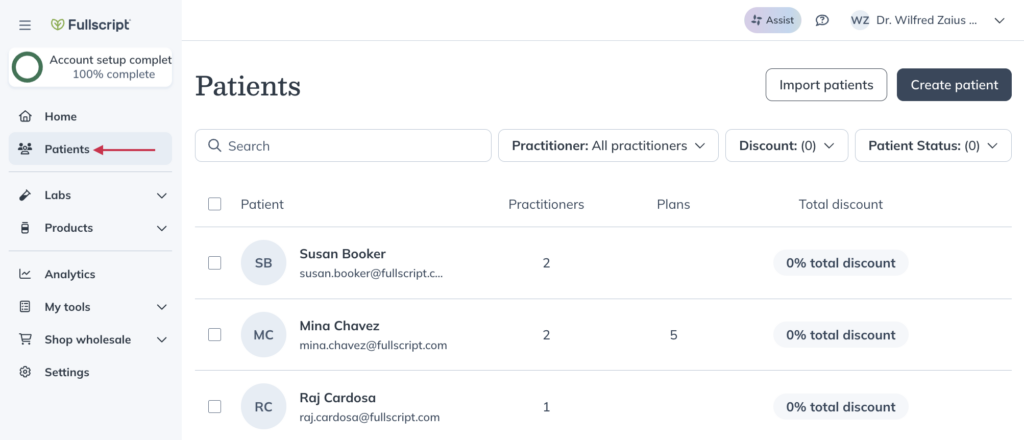
- On the Patients page, click Create patient.

- In the patient creation drawer, click the This patient is under 18 years old checkbox.
- If the parent or guardian of the dependent has an account in your dispensary, click Select next to Parent is existing patient?. You can use the parent’s name or email address to find their existing account.
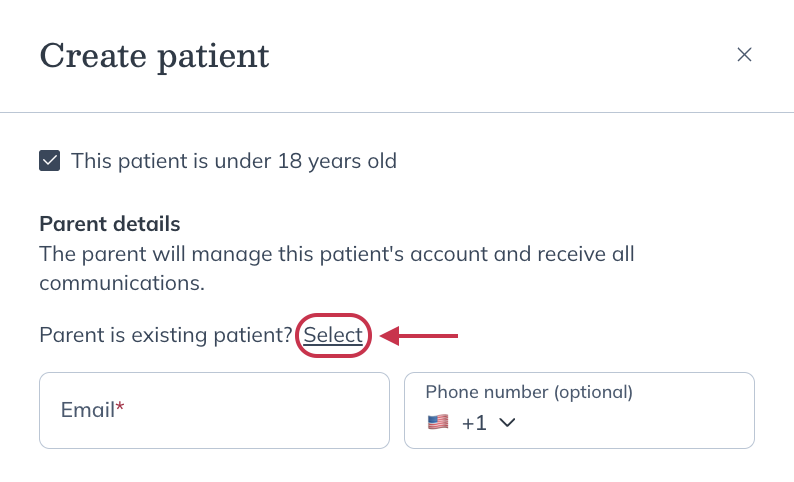
- Finish filling out the information for the dependent patient. You can give the dependent patient discounts unique to their account.
- After you’ve completed all the patient information, click Create patient to complete the dependent patient account.
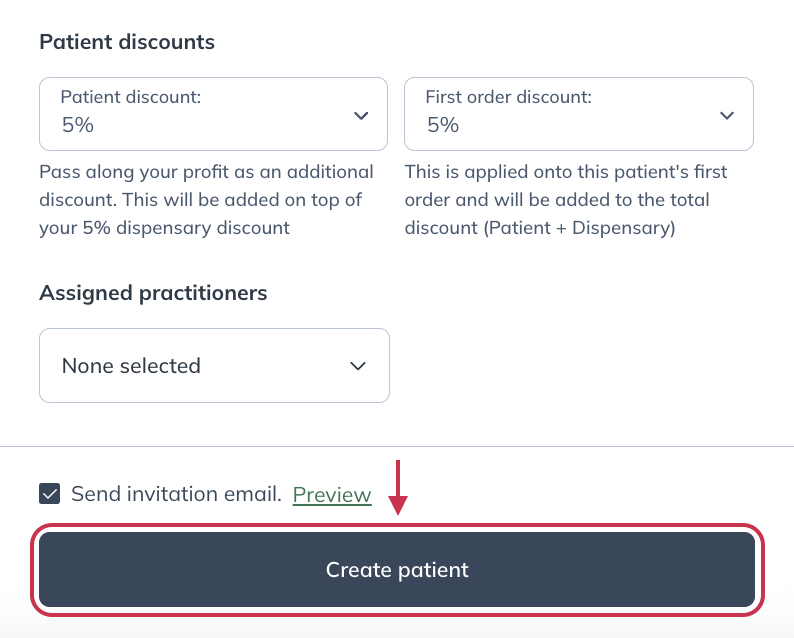
Editing and updating dependent accounts
Once a dependent account is set up, practitioners can continue managing care for both the dependent and the parent account.
If you need to update the information tied to a dependent account, you can do so the same way as editing other patient profiles.
Ordering labs for dependents
Certain labs available through Fullscript may have age-based restrictions that determine whether a test can be ordered for a dependent. These age guidelines come directly from the lab, so you can order with confidence knowing the test is appropriate for your patient.
Where you’ll see age restrictions
Though the majority of the lab catalog is available to pediatric patients, certain tests have minimum age requirements. You can view these age restrictions directly in the lab catalog by clicking the name of the test. Age or state-based requirements will be listed in the restrictions section.

If a test has an age restriction and the dependent doesn’t meet the age criteria, you’ll see that the test can’t be ordered at checkout.
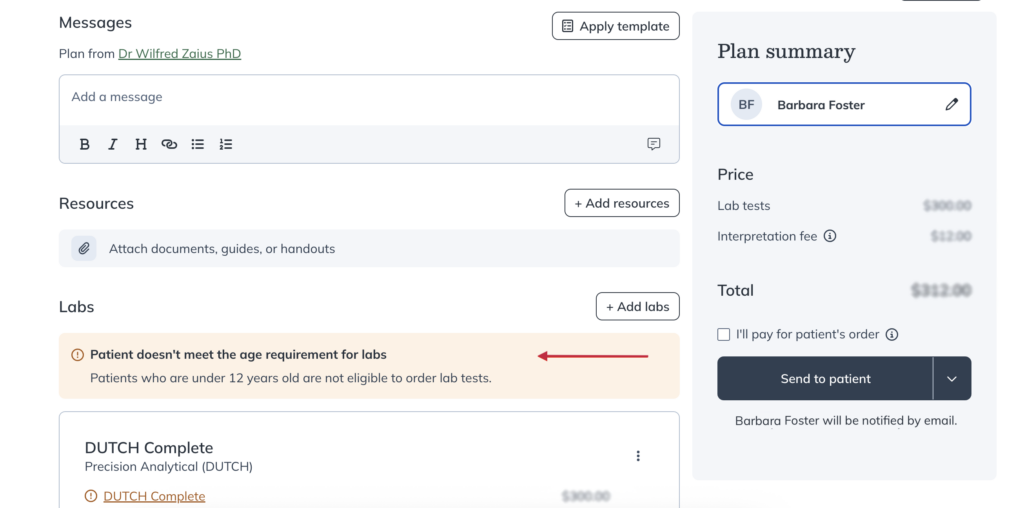
If a patient is prompted to enter their date of birth at checkout and they don’t meet the minimum age requirement, they’ll see a message explaining the test isn’t available.
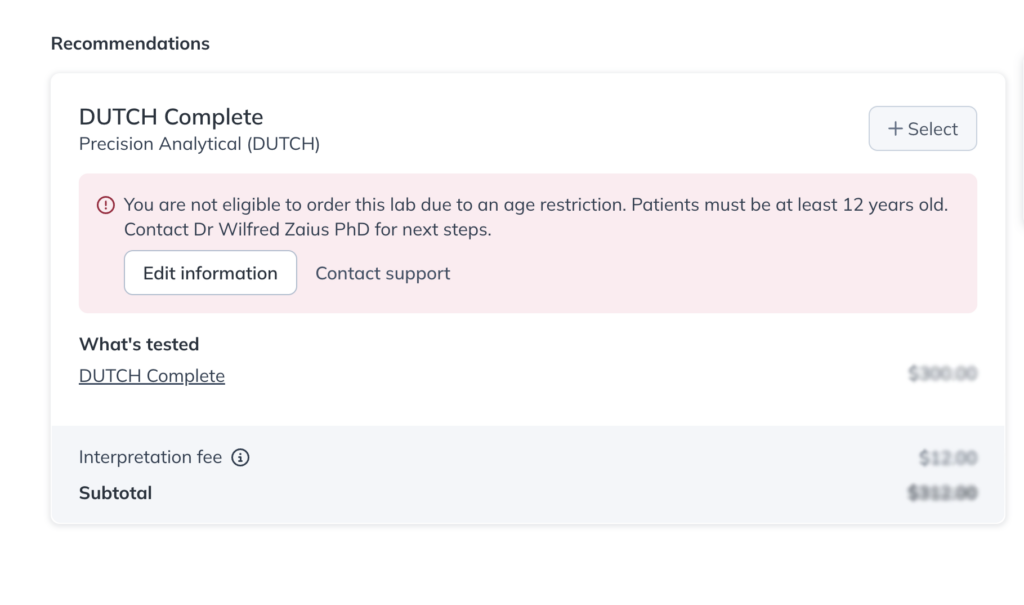
When dependents turn 18
When a minor patient turns 18, their dependent account is automatically transitioned into a standard Fullscript patient account. This ensures the patient can begin managing their own care, while maintaining their treatment history and account continuity.
As a practitioner, you don’t need to take action to trigger this account transition, but you may be asked to help complete the process.
When the account transition occurs on the dependents 18th birthday:
- The parent’s access is revoked.
- Fullscript sends a prompt to the parent asking them to enter an email address for the now adult patient.
- Once an email is entered, the patient receives an invite to set their own login credentials and take ownership of their account.
- The patient account retains the plan history, order history, but credit card information is removed automatically for security reasons.